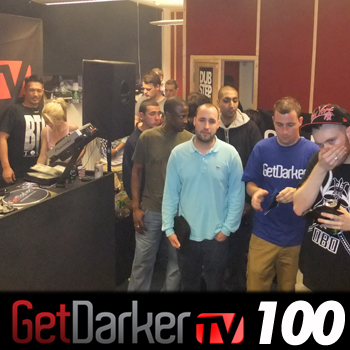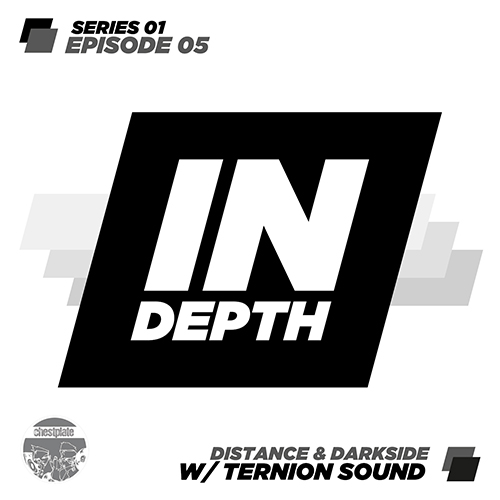
New generation hardware specialists, SUBPAC – are known for transferring low frequencies directly to the body and provides us with a new physical dimension to the music experience.
Check out their brand new website, with exclusive music from some influential producers in on the circuit, such as Pinch, Vivek, Kode9, Ikonika, Truth + many more, gives listeners the opportunity to seriously feel it.
Team GetDarker are pleased to add don Distance to this list of exclusives to the Subpac Optimized project, with an exclusive titled ‘Sub Immersed’.
Check out the new site, and heaps of bass heavy exclusives: feel.subpac.com – “Feeling is believing”
We had a quick work with Distance:
For over a decade, Greg Sanders has refined a dark and brooding sound as Distance. Emerging in the mid–2000s as part of the first wave of British dubstep artists, Sanders was an integral part of the scene through collaborations with Skream and releases on Hotflush, Ringo, and Planet Mu. Originally influenced by metal, Sanders has always kept something of the genre in his music by staying focused on the impact of melodies.
As dubstep’s popularity rose around the globe Sanders set up his own label in 2007, Chestplate, as an outlet for his music. Three years later, in light of the success of his Rinse FM show which featured an hour of music dedicated to new talent, the label broadened to include other artists including Tunnidge and younger acts such as District and Sleeper, who brought with them new sensibilities. As the label nears its tenth anniversary, Sanders is hoping to make it a space where other tempos can also be explored following his own excursions for labels like Exit Records.
Following two albums on Planet Mu in 2007 and 2008, Sanders took a break from the format to focus on his label, DJ career, and work as a producer and mixing engineer. In October 2016 Sanders returned with Dynamis, released on Bristol’s Tectonic label, an album reflecting his progression over the past eight years through a wider palette of tempos and styles. The album also marks the first time that Sanders used the SubPac in his workflow, bringing it in at the final stages to help give him a different perspective.
How did the SubPac come into play for your new album?
I’m close with Pinch and he had one when they first came around. I remember trying it in his studio and at the time I wasn’t really… It was interesting but I felt I could do [the same thing] with my setup. I thought it was more for people who didn’t quite understand the frequency response from their speakers, say. So I kinda forgot about it and then earlier this year another friend of mine, a producer who does all sorts of things for TV and adverts, went to a VR evening where people were given a SubPac. He raved about it. So I got in touch and they invited me to try one out. I brought some familiar stuff to listen to on it and I thought, “OK maybe this can help.”
I was about three weeks away from finishing the album, doing the last tweaks. I took it back to the studio, set it up, and then went through the album. I opened each track session with it and it did point out some things I wouldn’t have necessarily spotted. There was a tune, “Kingdoms Fall,” where the sub note wasn’t the same as the synth line I had going on and I wouldn’t have spotted that without the SubPac. Also flipping from tune to tune you can notice how certain songs respond differently, how the bass doesn’t feel quite as rounded or the kick isn’t pumping the same.
What do you think are the advantages of bringing the SubPac into your workflow?
It allows me to go back and hear what I did differently. It won’t change how I work but if I’m at home for example, away from the studio with just my headphones, it’ll be useful. It’s that thing where it’ll sound the same wherever you take it, like headphones. I could bring my speakers to someone else’s studio but it’s gonna sound completely different. With the SubPac you can accustom yourself to it and use it anywhere you go to get similar results as you would in your studio.
I definitely want to continue using it at the mixdown stage, when I do the final mix. It can come on and show me what might be missing or wrong, I can reference it against other tracks. Some of the stuff I mix is very much for commercial radio, so to compare it with stuff you hear on radio is quite helpful as well, you don’t assume that stuff has got bottom end in.
How has the reception been with the new album?
It’s been amazing, it has reached people that my music wouldn’t normally reach. The idea of this album was to present myself as just an electronic producer and not, “Oh Distance, he’s the dubstep producer.” My first two albums came out on Planet Mu and I was playing quite random electronic events at the time, before dubstep became a widely known genre . It’d be nice to go back to that, being included on random festivals or electronic nights, rather than just a dubstep night. It feels like a very different time now, it feels loose at the moment. It feels like people aren’t expected to just be making one style of music anymore. Things feel much more open now. And because people can access music so quickly they wanna hear something new all the time. You making something different is probably welcomed. People don’t question changes in direction so much.
How have things changed with the label over the past decade?
There was a period when everyone had pressing and distribution deals and it was simple, you’d pick the tunes and someone dealt with it. That stopped and for a while I was trying to do a release every two months and it was quite difficult, it was more than my mortgage. There were times I wondered if it was worth still doing something on vinyl. You’re talking 300 people worldwide, 500 maybe. It’s a lot of work. I decided to stick with it but I think all that’s happened in the last two years is that things have slowed down, including the output of the label and that’s purely because I don’t release for the sake of it. There were only three Chestplate releases this year, which I feel were strong and contribute to the scene evolving.
How did you approach your contribution to the FeelBass project and how did the SubPac fit into it?
I wanted to create a track which would be exciting for the listener and one that could still fit into a DJ set. I played around with some crazy sound design for the breakdown including foley recordings and digitally processed drums. It also had to bring the SubPac alive so I made sure the bottom end is solid and the SubPac helped me judge that.
I used the SubPac when creating some of the track’s individual elements. For example there is big crash sequence in the breakdown and I wanted it to rumble between 30–50hz to give a real sense of involvement for the listener. I really helped me separate the kick and the sub bass frequencies too.





Be the first to comment